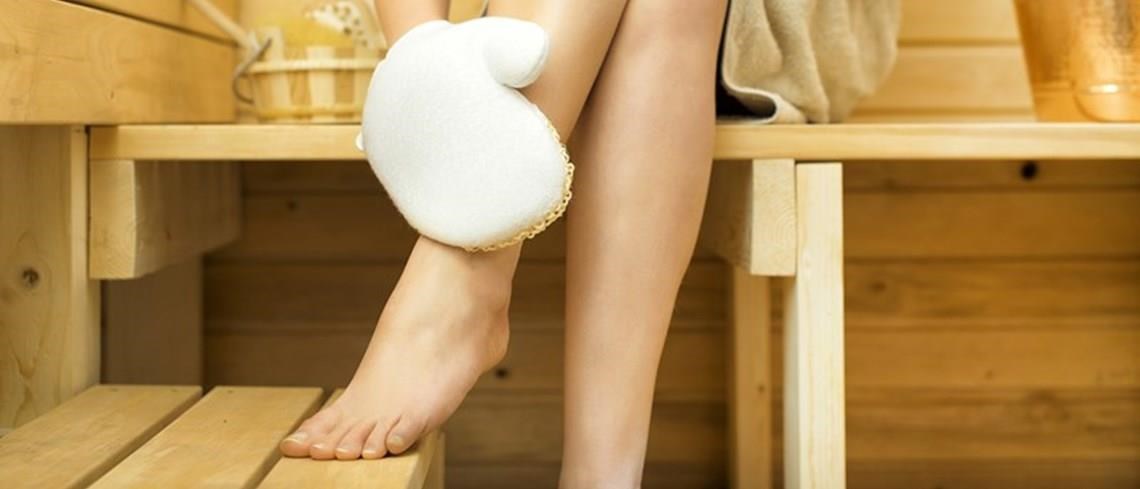How to prevent ingrown hairs

Ingrown hairs – also known as shaving bumps, or by their scientific name, pseudofolliculitis barbae – can be an unfortunate side effect for many non-permanent hair removal methods. Ingrown hairs occur when hair grows back into the skin, for example when it’s cut or if it’s blocked by dead skin. This can lead to inflamed bumps in the skin and sometimes an infection around the hair follicle. Read on to learn more about ingrown hairs and how to prevent ingrown hair.
Symptoms
Ingrown hairs be painful, itchy and burn, but they’re also not very nice looking, often appearing like little bumps or pimples on what should have been smooth skin. Sometimes these bumps look like blisters or can fill with pus if infected. 1In bad cases, they can become darker than your surrounding skin or cause scarring. A typical feature of an ingrown hair is if the hair beneath the skin is in the shape of a loop since the tip of the hair curves and grows into the skin.1
Ingrown hairs can happen anywhere in the body where hair has been removed, but common places include:1
- women’s legs, pubic area, and armpits
- men’s chins, cheeks, and necks
- buttocks.
Causes
Ingrown hairs occur when the sharp, pointed tip of a recently shaved hair retracts beneath the skin’s surface and starts growing under the skin. Or, the growing hair might coil over, re-enter the skin’s surface and continue growing underneath. This can happen when dead skin blocks the follicle, causing the hair to grow inwards under the skin or into a nearby follicle.1
An ingrown hair is more likely to occur if the hair is curly or coarse, or in areas that experience a lot of friction. While they’re most often associated with shaving, they can occur after waxing and tweezing as well:
- Shaving – ingrown hairs are sometimes referred to as “shaving bumps” since they’re commonly associated with shaving. Shaving forces the hair back into its follicle, where it can grow inwards.
- Waxing – this removes the hair from the root and damages the follicle, so hair can become trapped beneath the skin when it grows back.
- Tweezing – Similar to waxing, tweezing removes hair from the root and can result in ingrown hairs.
Prevention
Ingrown hairs are common, but there are steps you can take to avoid them and minimise the chances of them appearing.
Exfoliate
Exfoliation is the process of removing dirt, oils and dead skin cells from the outer layers of your skin, preventing them from building up and clogging your follicles. Exfoliating before shaving or a few days after waxing is one of the easiest and most effective things you can do to prevent ingrown hairs.
There are two ways to exfoliate. Mechanical exfoliation uses a tool, like a brush or sponge, to physically remove dead skin cells by lightly stroking the skin. Chemical exfoliation uses chemicals to gently dissolve dead skin cells – the product should be applied in small, circular motions and then rinsed off with warm water.
If a hair does start to become ingrown, exfoliation can sometimes be enough to pull it up and out of the skin where it can continue to grow correctly. Since exfoliating can dry your skin, remember to apply moisturiser immediately afterwards to keep your skin hydrated.
Use proper techniques
If you choose to shave with a razor, using proper technique can help prevent the occurrence of ingrown hairs. When shaving:
- Don’t use a blunt razor – if you feel the hairs tugging rather than cutting, it may be time to replace your razor
- Use a single-blade razor to avoid shaving too close to the skin
- Don’t dry shave – use shaving cream to soften the hair and minimise shaving too close to the skin
- Shave in the direction of hair growth as shaving against the hair growth can irritate the skin
- Don’t pull or stretch the skin while shaving as this can cause the hair to draw back into the skin
- Rinse your razor often for a cleaner shave, ideally after each stroke
- Cleanse your skin with warm water beforehand – this helps the hair shaft to swell and reduces the chance of a sharp tip forming.
Proper technique and preparation are also important when waxing. If your skin is dry or if you pull off a wax strip incorrectly, it’s possible to break the hairs instead of pulling them out and this may contribute to ingrown hairs. When waxing:
- Keep your skin hydrated to avoid dry skin and minimise hair breakage
- Make sure to always pull against the direction of hair growth, close to the skin
- Maintain the same angle all the way through until the strip is completely off
- Moisturise after waxing to keep hair healthy when it grows back.
Ingrown hair removal
Most ingrown hairs won’t cause any complications and it’s usually best to let them resolve on their own. However, if an ingrown hair does get infected, it’s important to see your doctor to get it treated.
Finally, if it feels like your ingrown hairs are a really persistent problem, don’t hesitate to see your doctor – they’ll be able to offer advice and further treatment options that may help.
RB-M-106634
Reference:
1. Health Direct. Ingrown hair. Available at: https://www.healthdirect.gov.au/ingrown-hair (accessed July 2022)
